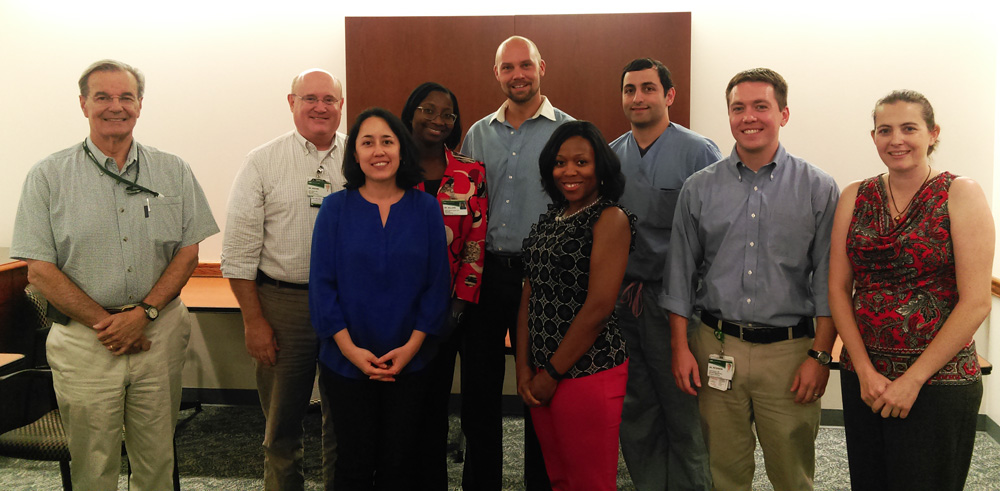 Faculty mentors lead each student Learning Community. Pictured are community mentors (front row) Caroline Harada,M.D.; Danielle Powell, M.D., (second row) Sergio Stagno, M.D.; John Woods, M.D.; Alethia Sellers, M.D.; David Resuehr, Ph.D.; Charles Khoury, M.D.; Todd Peterson, M.D.; and Leah Leisch,M.D. Not pictured are Stephanie Berger, M.D., and Blake Gibson, M.D. Medical school is stressful. Academic pressures, coupled with heavy course loads and competitive environments can weigh on students.
Faculty mentors lead each student Learning Community. Pictured are community mentors (front row) Caroline Harada,M.D.; Danielle Powell, M.D., (second row) Sergio Stagno, M.D.; John Woods, M.D.; Alethia Sellers, M.D.; David Resuehr, Ph.D.; Charles Khoury, M.D.; Todd Peterson, M.D.; and Leah Leisch,M.D. Not pictured are Stephanie Berger, M.D., and Blake Gibson, M.D. Medical school is stressful. Academic pressures, coupled with heavy course loads and competitive environments can weigh on students. Leaders in the UAB School of Medicine recognize this and have formally established learning communities—small groups led by faculty mentors that serve as a home base for students throughout their medical school career— into the curriculum as a way to focus on medical student health and wellness.
“Medical school can feel overwhelmingly big and impersonal,” said Caroline Harada, assistant dean for Community-Engaged Scholarship. “Learning communities allow students to quickly develop close relationships with each other and with faculty mentors. This structure allows students to form tight-knit groups that learn together and support each other through thick and thin.”
According to a study published in Academic Medicine, the journal of the Association of American Medical Colleges, more than 52 percent of medical schools in the United States, Canada and Puerto Rico have established learning communities to focus on different curricular aspects of medical education. The UAB learning communities are different from those at many other medical schools because they are first focused on student wellness, according to learning communities organizer Jason Noah, M.Ed., program director for Student Success Programs in the Office of Medical Student Services.
“We want to create a safe space for medical students to talk about issues they might be facing in school or in life, and to let them know that it’s OK to reach out for help,” Noah said. “Faculty mentors will teach students skills in asking others for help, resilience from setbacks and recognizing when a fellow student is struggling. The goal is to create healthy people who will be healthy physicians.”
Between 60 and 72 students are assigned per community, divided between the first-, second-, third- and fourth-year classes. Students are assigned to a learning community based on their clinical campus assignments and will stay with the same community throughout their four years of medical school.
Each community, led by a faculty mentor responsible for the curriculum, meets monthly in groups of 10-15 to discuss wellness and professional development, as well as important topics like health disparities, ethics, interprofessional teamwork and community engagement. The smaller groups, Noah said, allow for teaching parts of the curriculum that are better suited for small-group discussions.
The full learning communities also meet for an optional social event once a month, providing a social network for students and the opportunity for longitudinal peer mentoring.
“It’s a community for medical students, both when they want it and when they need it,” Noah said.
